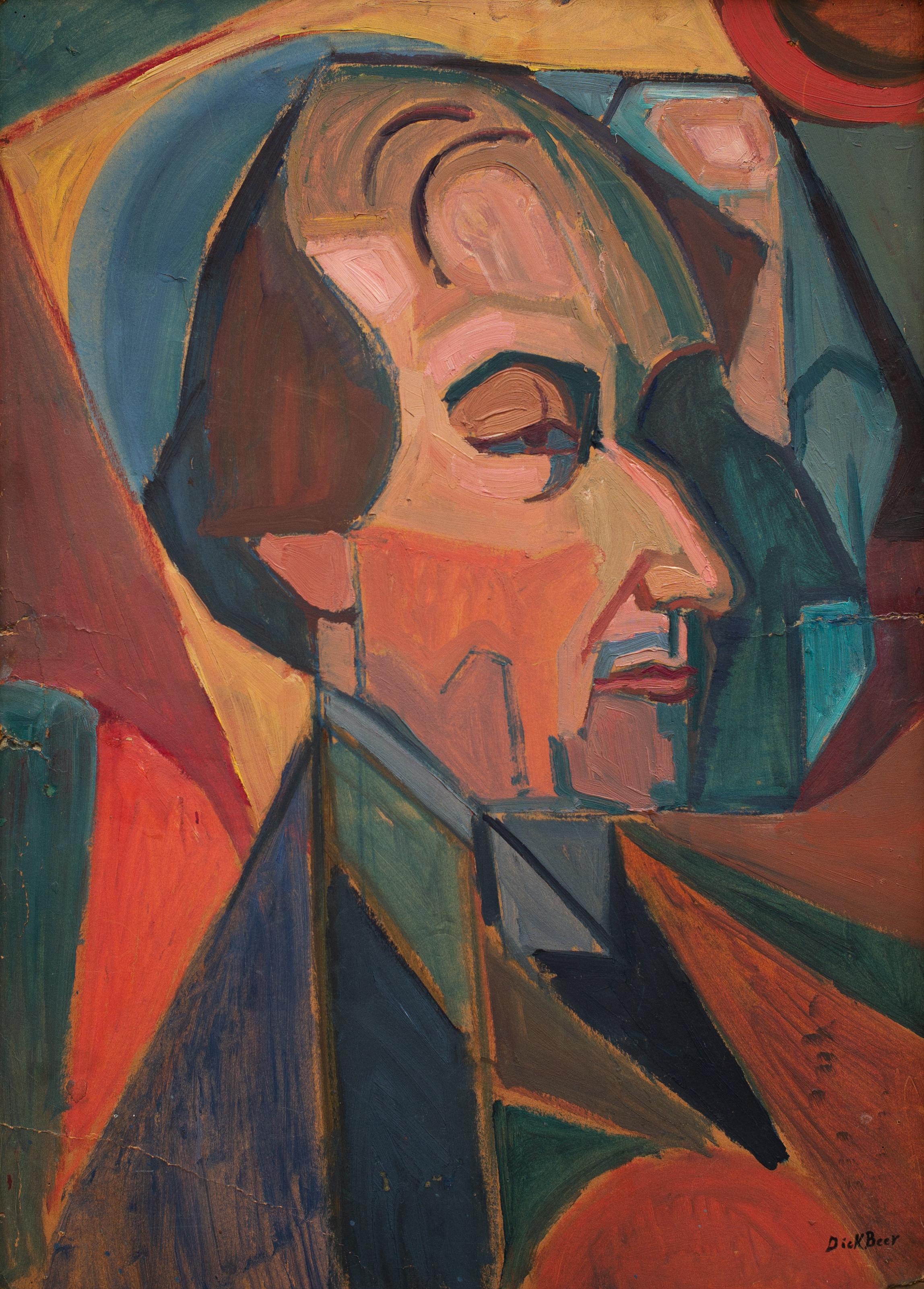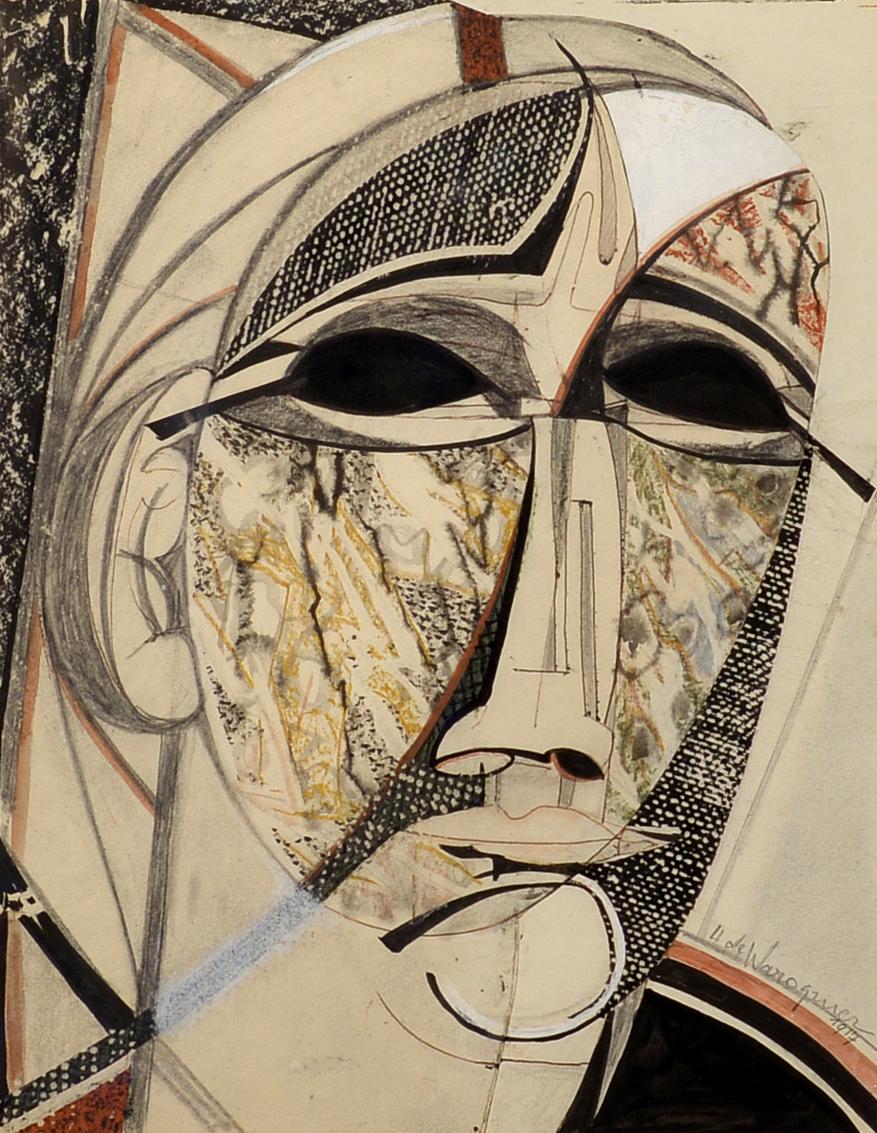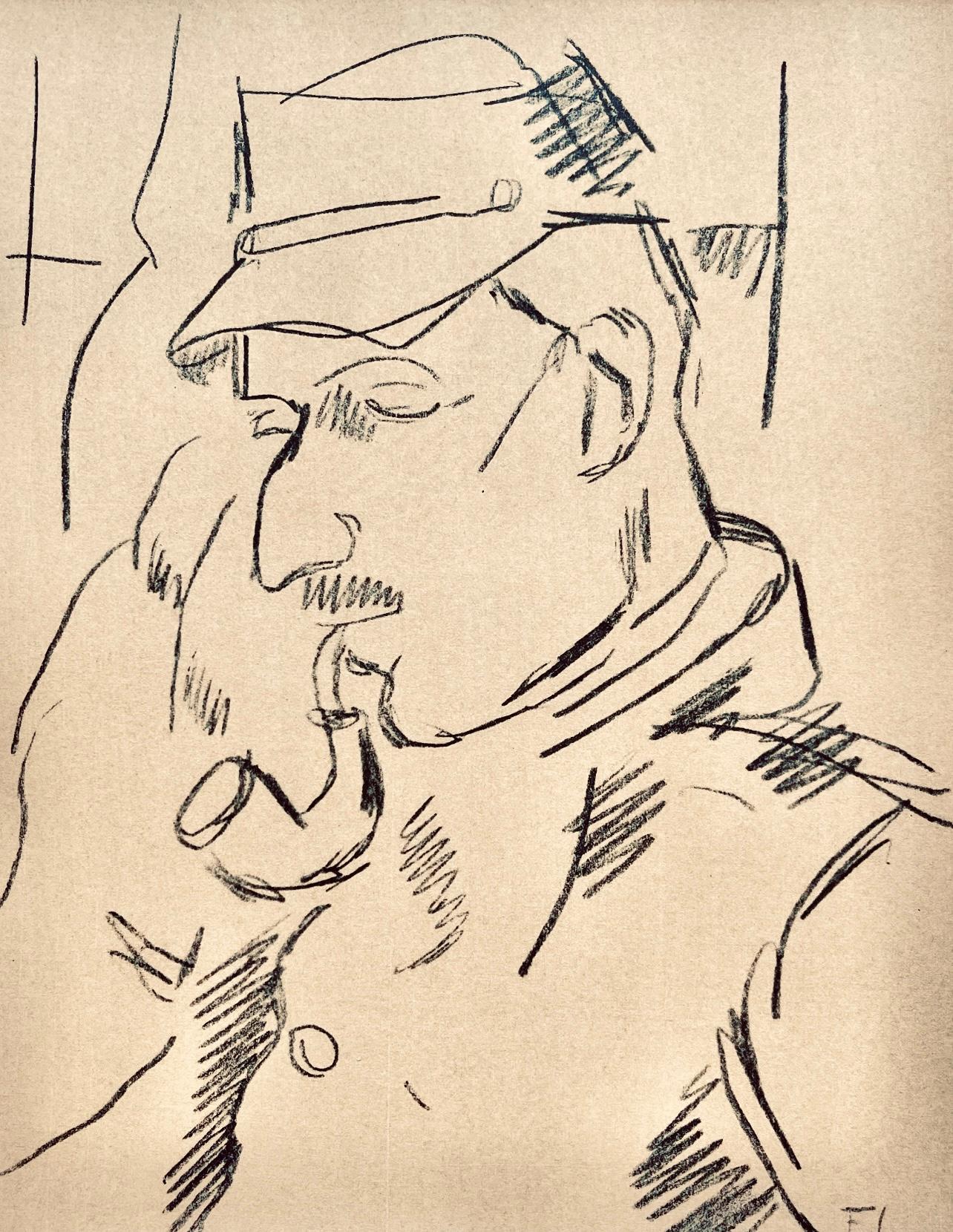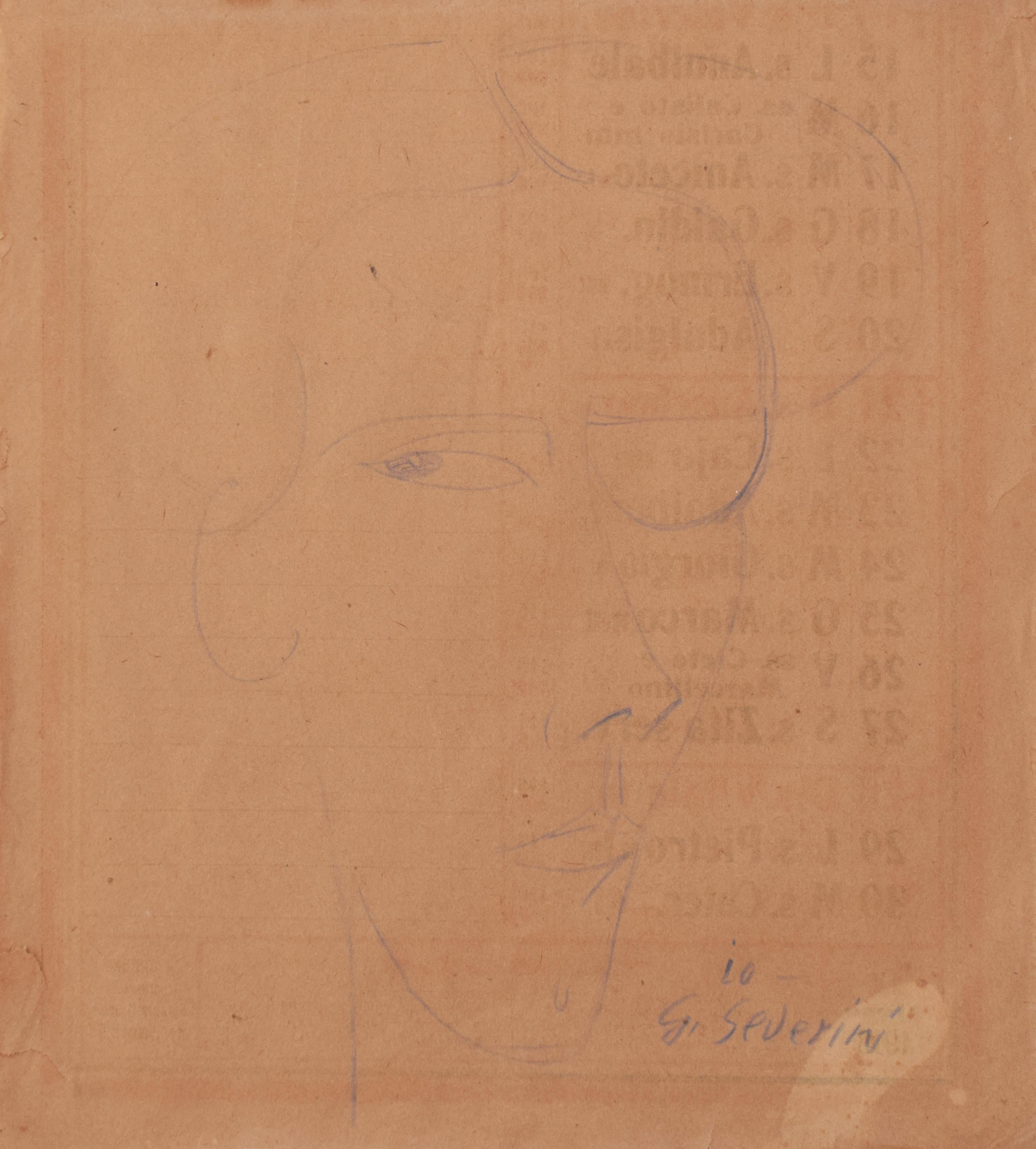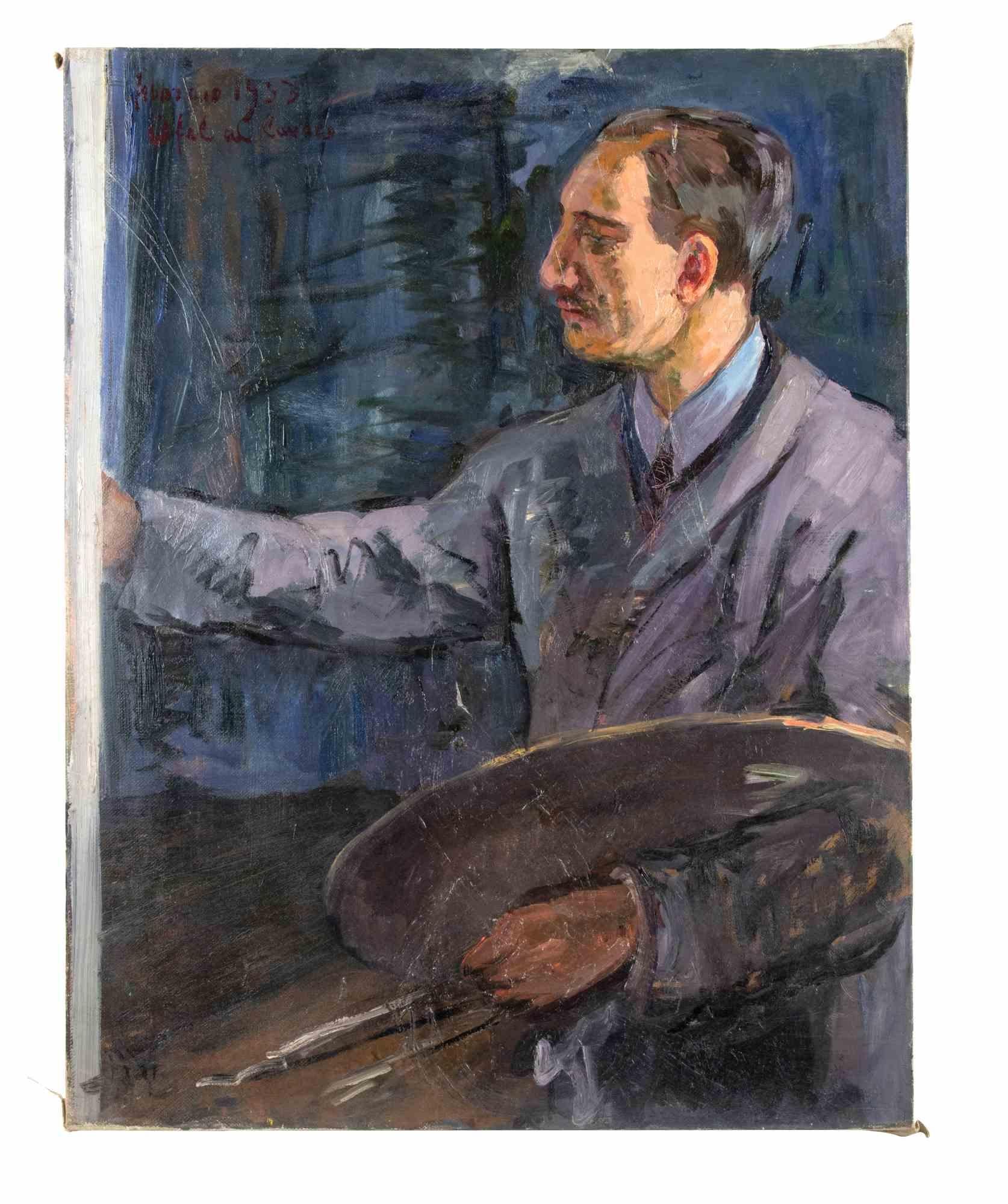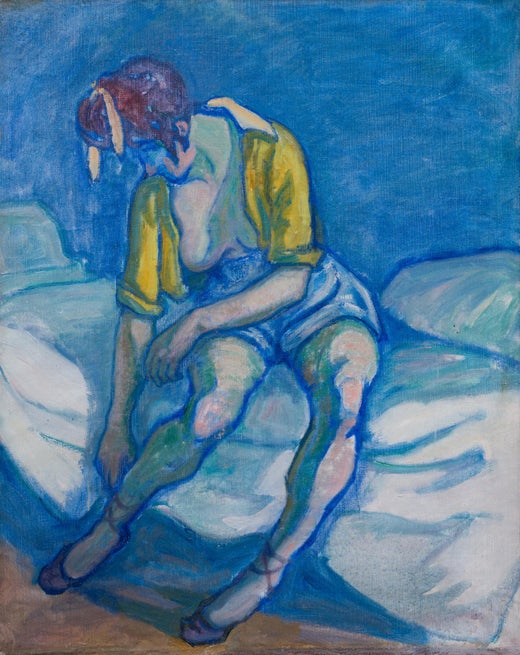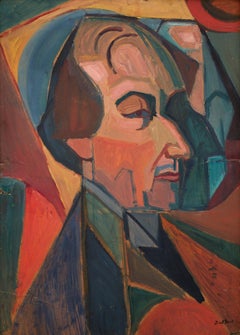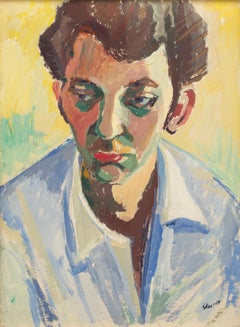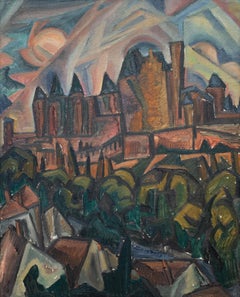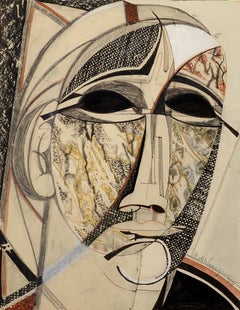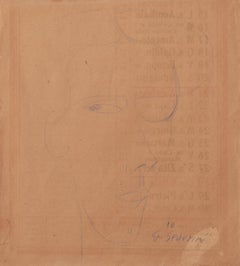Items Similar to Cubist Portrait of Gabriele Varese (in Italian uniform), 1919
Want more images or videos?
Request additional images or videos from the seller
1 of 10
Dick BeerCubist Portrait of Gabriele Varese (in Italian uniform), 19191919
1919
$13,360.61
$16,700.7620% Off
£9,877.67
£12,347.0920% Off
€11,200
€14,00020% Off
CA$18,377.31
CA$22,971.6420% Off
A$20,427.53
A$25,534.4120% Off
CHF 10,707.67
CHF 13,384.5920% Off
MX$249,469.51
MX$311,836.8920% Off
NOK 133,679.09
NOK 167,098.8720% Off
SEK 125,767.09
SEK 157,208.8620% Off
DKK 85,265.41
DKK 106,581.7720% Off
About the Item
Dick Beer (b. London 1893 - d. Stockholm 1938)
Portrait of Gabriele Varese (in Italian uniform), 1919
oil on canvas mounted on panel
116 x 90 cm
stamp signature
Exhibited:
Solo exhibition, Stockholm, Nov-Dec 1917;
The Royal Academy Stockholm 1973;
Åmells Konsthandel – En internationell kubist, Stockholm & London 2008
Hälsinglands Museum 2011
Millesgården – Dick Beer – Impressionist & Kubist, 2012
Provenance:
Within the family Beer until today
Dick Beer was born in 1893 in London as Richard Beer, the youngest of five brothers. His father, John Beer (1853-1906), was a watercolourist who was born in Stockholm and had left Sweden at the age of 17. John Beer instructed his sons in drawing and painting, among other things. A number of sketchbooks bear testimony to the boys’ talent.
Dick Beer’s parents died in 1906 and 1907. Barely 15 years old, Beer arrived in Sweden as an orphan. First he lived with relatives and finally he ended up at Reverend Laurell in Västergötland.
Dick Beer began his artistic studies at the Althin School of Painting in Stockholm in 1908 and continued at the Royal Academy of Arts in the autumn of 1910, but in September 1912 he broke off his studies and travelled to Paris. He rented a studio and enrolled at the Colarossi and Grande Chaumière academies.
In the summer of 1913, Dick Beer travelled to Pont-Aven in Bretagne in order to paint. In September the same year, he held his first solo exhibition in Stockholm which he gave the French title Exposition des tableaux de Bretagne et autour de Paris. The exhibition proved a success. Many of the paintings were executed in a light palette in a style inspired by the impressionists.
In 1914, Dick Beer undertook an extensive study trip to Italy, Tunis, Morocco and Spain, which resulted in canvases overflowing with colours and light. When the French army mobilised, he volunteered and was enlisted in the French Foreign Legion. In 1915 Dick Beer sustained severe head injuries in a grenade attack, which resulted in deafness and a nervous condition that would plague him for the rest of his life. Two of his brothers died the following year, fighting for the English army.
Dick Beer was hospitalised and convalesced at Château de Rochefort. Here he started painting again, in an impressionist style, a painting dominated by blue and green hues.
In 1918, Dick Beer married Ruth Öhrling, a dentist, and their son John was born later in the year. During this time, Beer began experimenting with cubist painting and created several large compositions, including the painting “The Arab Café”.
In the years that followed, Dick Beer was based in Paris, where he often moved house. He was instructed by André Lhote, who encouraged his students to work freely in the studio and provided them with individual critique. Beer often travelled to Bretagne or Provence. His artist friends came from all over Europe and included Amedeo Modigliani. Dick Beer exhibited fairly regularly in Paris between 1919 and 1934 and made a name for himself in French artist circles.
In the summers, Ruth regularly rented a house in the countryside, often at Lake Mälaren. She kept a large house with many models and friends and there was a lot of painting and discussions. In 1933, the couple divorced but Ruth still loved Dick and continued to support him financially for the rest of his life.
Dick Beer also exhibited in Sweden, albeit irregularly due to his failing health. In the 1920s and 1930s, Beer continued to pursue an expressionist painting with intense colours and unexpected perspectives, but eventually he veered towards more naturalistic forms, including a large number of nudes. He also painted several portraits of artists, politicians and writers.
In 1938, Dick Beer sojourned in Arles. The budding photographer Christer Strömholm became a student of Dick Beer’s and they developed an intimate friendship. In June the same year, Dick Beer died in Stockholm following complications of pneumonia.
Cubistic vision
In the period following the First World War, the artist’s painting underwent a fundamental transformation. Dick Beer was influenced by various modernistic expressions. In Paris, the first wave of cubism, led by Pablo Picasso and Georges Braque, was established. It was a controversial artistic style. There was a heated debate about cubism, in which the artist broke up the motif into smaller components, sometimes called facets, in order to rebuild it on the flat surface of the pictorial plane. This manner of painting represented a complete break with preceding pictorial conventions and naturalistic painting.
Cubism was governed by theory, not practice, and critics claimed that the style was too intellectual for the general public and they predicted that it would disappear and that artists would return to a rather more classic expression.
The theories surrounding cubism and its various expressions opened up for a number of reinterpretations in the 1910s. Dick Beer was well aware of the cubist discussions. He embraced the ideas but created a varied, personal and emotive cubism in the years around 1918. His painting was often an explosive discharge with playful characteristics and a futuristic dynamism which accentuated the painting’s inherent speed and movement, as for example his works “Dancer” and “The Toy Box”. He also experimented with geometric compositions of buildings and landscapes, which were reminiscent of Paul Cézanne’s more cubic landscapes. Here, Beer’s colours were often muted, in blue, brown and red hues. He frequently returned to earlier motifs and reworked his canvases into a cubist style, as in “Dancer tying her shoes” and “Seated dancer“.
Contemporary art critics were appalled and Beer had to endure severe criticism. At one point, the artist published a reply in the daily Politiken, 1919, where he described his view on art:
“... because love for and understanding of art, ‘l’art pour l’art’, is not easy to achieve, and neither is it easy to comprehend the different movements’ or schools’ origin, goals, characteristic endeavours, etc. – These international phenomena require not only theoretical and art historical knowledge but (...) the ability to empathise with and feel for art, as its practitioners do”.
- Creator:Dick Beer (1893 - 1938, Swedish, British)
- Creation Year:1919
- Dimensions:Height: 45.67 in (116 cm)Width: 35.44 in (90 cm)
- Medium:
- Movement & Style:
- Period:
- Condition:Very good condition, ready to hang.
- Gallery Location:Stockholm, SE
- Reference Number:1stDibs: LU1445211789442
Born in London, Dick Beer relocated to Sweden in 1907. He studied art at Althins Målarskola and the Royal Swedish Academy of Fine Arts, before moving to Paris in 1912. His artistic journey was interrupted by World War I, during which he served as a volunteer on the French side. After recovering from injuries at Château de Rochefort—a location shared with the renowned Fernand Léger—Beer became deeply influenced by cubism. Beer’s works evolved over his career, oscillating between realism, expressionism, and cubism. While his cubist works faced harsh criticism early on, they later gained recognition as some of the finest examples of Swedish modernism. Today, Beer’s art is celebrated for its emotional depth and technical skill, with pieces held in major collections including the Nationalmuseum, Moderna Museet, and several regional museums in Sweden.
About the Seller
5.0
Platinum Seller
Premium sellers with a 4.7+ rating and 24-hour response times
Established in 2020
1stDibs seller since 2020
194 sales on 1stDibs
Typical response time: <1 hour
Associations
International Confederation of Art and Antique Dealers' Associations
- ShippingRetrieving quote...Shipping from: Stockholm, Sweden
- Return Policy
Authenticity Guarantee
In the unlikely event there’s an issue with an item’s authenticity, contact us within 1 year for a full refund. DetailsMoney-Back Guarantee
If your item is not as described, is damaged in transit, or does not arrive, contact us within 7 days for a full refund. Details24-Hour Cancellation
You have a 24-hour grace period in which to reconsider your purchase, with no questions asked.Vetted Professional Sellers
Our world-class sellers must adhere to strict standards for service and quality, maintaining the integrity of our listings.Price-Match Guarantee
If you find that a seller listed the same item for a lower price elsewhere, we’ll match it.Trusted Global Delivery
Our best-in-class carrier network provides specialized shipping options worldwide, including custom delivery.More From This Seller
View AllCubist Painting from 1918-19, Portrait of Dr Mens III
Located in Stockholm, SE
Dick Beer (b. London 1893 - d. Stockholm 1938)
Portrait of Dr Mens III, 1918-1919
oil on board
70 x 50 cm
stamp signed
painted c. 1918-1919
Provenance:
Within the family Beer until today
Dick Beer (1893-1938)
Dick Beer was born in London in 1893. His father, John Beer (1853-1906), was a Swedish painter from Stockholm who had a career mainly as a watercolour painter with motifs of horses from racetracks and fox hunts from the countryside.
Barely fifteen years old, Dick Beer became an orphan and came to Sweden in 1907. Already in 1908-1909, he started at Althin's painting school in Stockholm. And later, at the Royal Academy of Arts from 1910-1912. His teachers were, among others, Gustaf Cederström, Oscar Björk and Alfred Bergström...
Category
1910s Cubist Portrait Paintings
Materials
Oil, Board
Portrait of a Man by Swedish Artist Martin Eder, 1954, Gouache on Masonite
By Martin Eder
Located in Stockholm, SE
Martin Eder was a Swedish drawing teacher, artist and ceramicist. Martin was born on the island of Gotland and spent a lot of time there, he also lived in Sala. Martin was a curious ...
Category
1950s Expressionist Mixed Media
Materials
Masonite, Gouache
Cubist Painting By Swedish Artist Dick Beer, View From a Window, 1920
Located in Stockholm, SE
Dick Beer (b. London 1893 - d. Stockholm 1938)
Utsikt från fönster, View From a Window, 1920
oil on canvas
73 x 60.5 cm
stamp signed
painted 1920
Exhibi...
Category
1920s Cubist Abstract Paintings
Materials
Canvas, Oil
$8,588 Sale Price
20% Off
A Cubist French City, 1919
Located in Stockholm, SE
Dick Beer (b. London 1893 - d. Stockholm 1938)
A French City, 1919 (Fransk stad)
oil on canvas
canvas dimensions 82x66 cm
frame 94x78.5 cm
signed Dick ...
Category
1910s Cubist Abstract Paintings
Materials
Canvas, Oil
An Italian Man With Hat and Scarf by Italian Artist Giuseppe Giardinello
Located in Stockholm, SE
For sale is a beautiful small portrait by the Italian artist Giuseppe Giardinello, whose life spanned from 1887 to 1920. This work of art is a remarkable representation of Giardinell...
Category
Early 20th Century Post-Impressionist Portrait Paintings
Materials
Oil, Wood Panel
Portrait of a Man from the Rif Region
Located in Stockholm, SE
This watercolour portrait by Finnish artist Hugo Backmansson depicts an Arab man from the Rif region of Morocco. Created during Backmansson’s journey to Morocco in 1939, the work cap...
Category
1930s Portrait Drawings and Watercolors
Materials
Paper, Watercolor
$3,340 Sale Price
20% Off
You May Also Like
"Cubist Portrait, " 1917, Modernist, Museum of Modern Art, Paris, Abstract
By Henry de Waroquier
Located in Wiscasset, ME
Henry de Waroquier, painter, sculptor and printmaker, was born in Paris in 1881. He studied in Paris at the School of Decorative Arts, and privately with the architect Charles Genuy...
Category
Early 20th Century Modern Mixed Media
Materials
Mixed Media
Léger, Portrait de mon caporal de la Cie, 5/4 du 1er Génie (after)
By Fernand Léger
Located in Southampton, NY
Lithograph, stencil on vélin paper. Paper Size: 10 x 7.75 inches. Inscription: Signed in the plate and unnumbered, as issued. Notes: From the folio, Fernand Léger, Dessins de Guerre ...
Category
1950s Cubist Figurative Prints
Materials
Lithograph
$716 Sale Price
20% Off
"Portrait of a Man" Grey Cubist Portrait
By Norman Baasch
Located in Houston, TX
Surrealist portrait of a man with multiple shades of black, grey, and white. The painting is signed and dated in the bottom right corner. The painting is framed in a black frame with...
Category
2010s Surrealist Portrait Paintings
Materials
Acrylic
Self-portrait
By Gino Severini
Located in Roma, RM
Gino Severini (Cortona 1883 - Paris 1966), Self-Portrait
Pencil drawing on paper 25 x 21 cm signed Io G. Severini lower right.
Bibliography: Gino Severini before and after the work...
Category
Early 20th Century Cubist Portrait Drawings and Watercolors
Materials
Paper, Pencil
Price Upon Request
Self Portrait - Oil Paint by Antonio Feltrinelli - 1930s
By Antonio Feltrinelli
Located in Roma, IT
Self portrait is a modern artwork realized by Antonio Feltrinelli in 1930s.
Mixed colored oil painting on canvas.
Not signed.
Antonio Feltrinelli (Milan, 1887 – Gargnano, 1942)
He...
Category
1930s Modern Figurative Paintings
Materials
Oil
Artist self-portrait
By Élisabeth Dujarric de La Rivière
Located in BELEYMAS, FR
Elisabeth DUJARRIC de LA RIVIÈRE
(Jouy-en-Josas 1930 – Excideuil 2005)
Artist's self-portrait
Oil on canvas
H. 171 cm; L. 70 cm
Signed on the back
Provenance: Private collection, Périgord
Born in the heart of the Bièvre valley, a few kilometers from Versailles...
Category
1950s Cubist Portrait Paintings
Materials
Canvas, Oil
More Ways To Browse
French Uniform
Antique Uniforms
Army Uniform
1930s Cubist Painting
Picasso Cubist Portrait
Antique Portrait Box
In The Manner Of Picasso
Modigliani Portrait
Swedish Oil Portrait
Chateau Panel
Morocco Dior
Portrait Of Ruth
Black Plague
Antique Shoe Form
Picasso Stamped Signature
Picasso Two Dancers
Arab Drawing
Boys Art Nude
